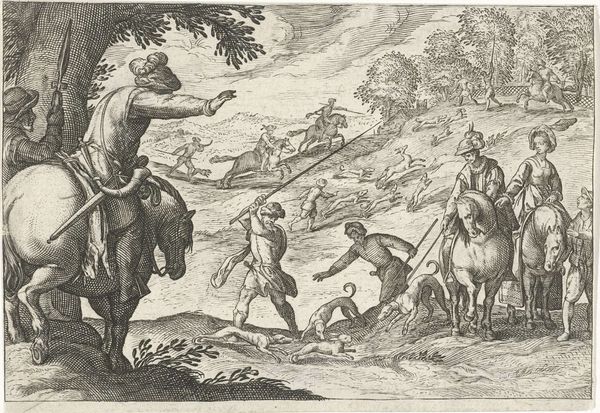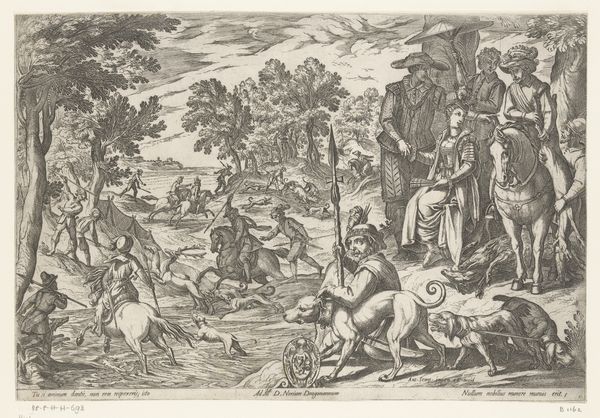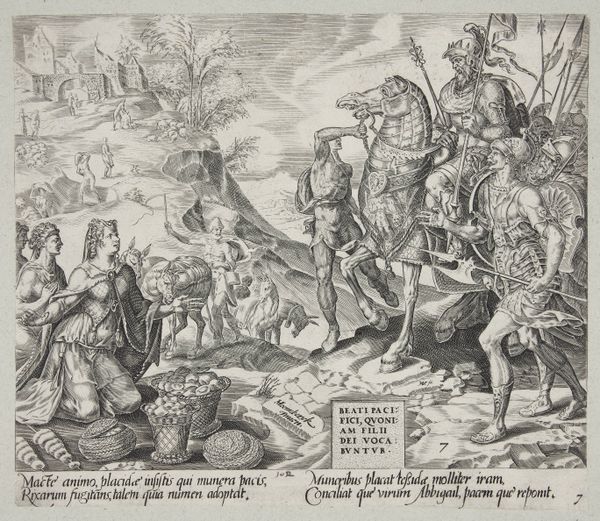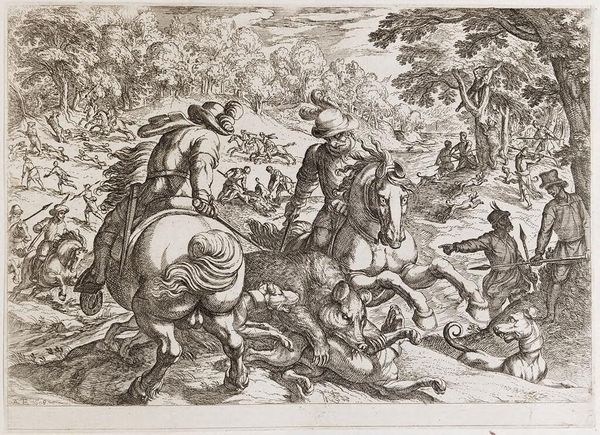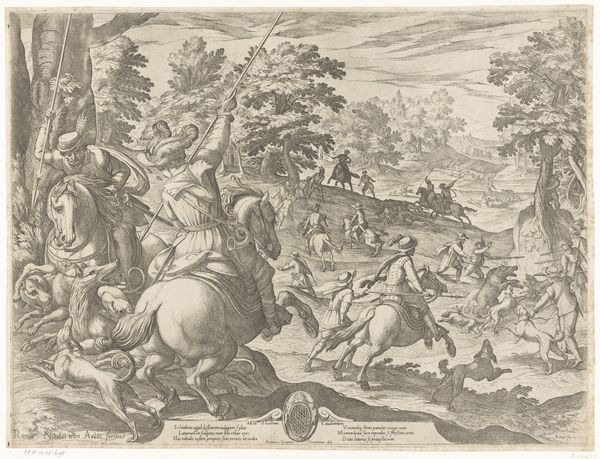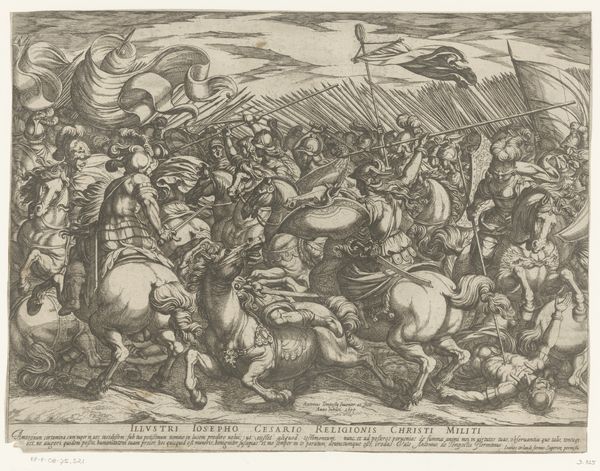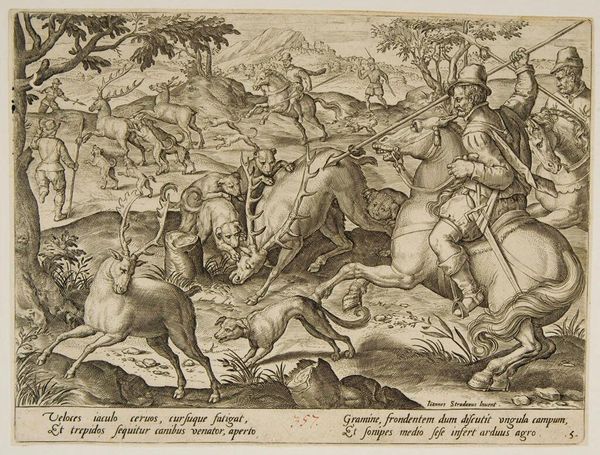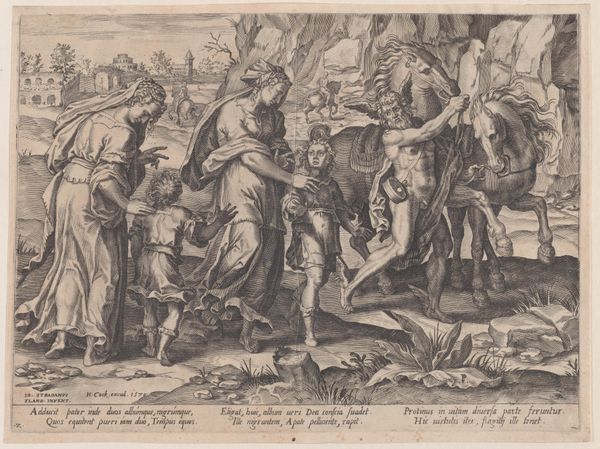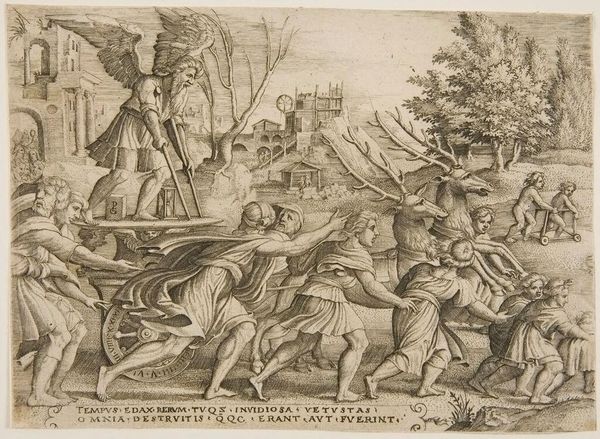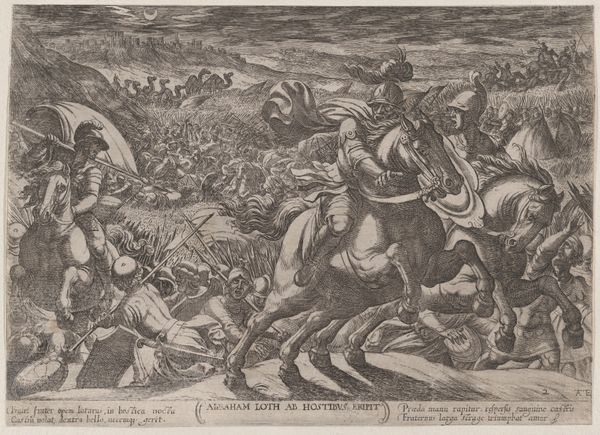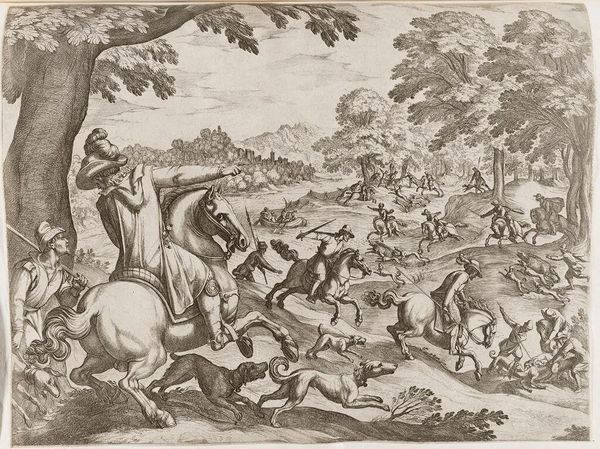
drawing, print, paper, ink, engraving
#
drawing
#
narrative-art
#
pen drawing
# print
#
mannerism
#
figuration
#
paper
#
ink
#
history-painting
#
engraving
Dimensions: height 330 mm, width 421 mm
Copyright: Rijks Museum: Open Domain
Editor: Here we have Pieter van der Heyden’s "Conversion of Paul," a drawing-turned-engraving from around 1540-1572. The scene feels chaotic, with figures and horses tumbling every which way. What do you see in this piece? Curator: The tumbling and disarray speak to the psychological impact of such a monumental event. Note how the bright, ethereal figure of Christ contrasts sharply with the earthly struggle below. This divine light pierces through, representing a moment of profound shift. Observe the careful use of light and shadow; consider how these create a palpable sense of drama. Does the fall of Paul signify the downfall of an old belief? Editor: Absolutely. It's interesting how even the landscape in the background seems affected by this event; there’s such a strong sense of dynamism. Why do you think the artist chose to include such details? Curator: These details enhance the idea of total transformation. Nothing remains untouched – not Paul, not his companions, not even the earth beneath them. It invites the viewer to contemplate moments in their own lives when belief systems are shaken and remade. Every element, from the writhing figures to the light source above, converges on this central theme. Can you find any details reflecting Roman iconography? Editor: Possibly the armor? But to be honest, I was too overwhelmed by the drama of the image. This gives me a new perspective. Curator: Precisely, that's the brilliance of visual symbols—how they create new meaning for an audience over time. Even now, new layers are created.
Comments
No comments
Be the first to comment and join the conversation on the ultimate creative platform.

